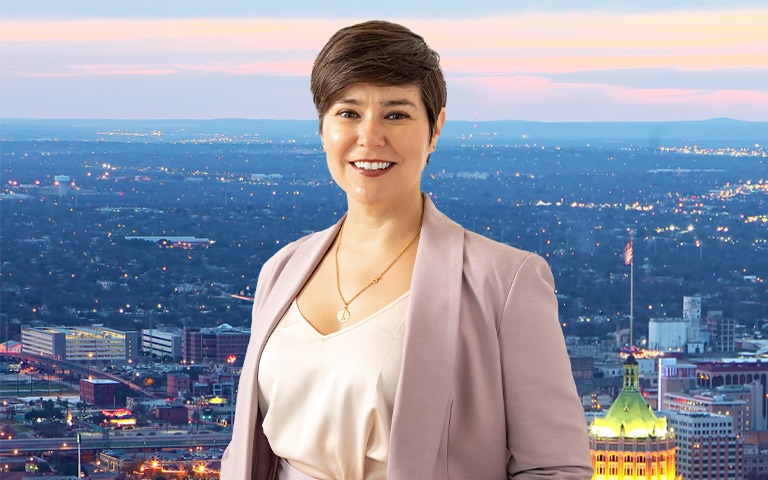This site uses cookies. By continuing to browse the site you are agreeing to our use of cookies. Read our privacy policy

Leonidas Anthopoulos, Professor at the University of Thessaly, Greece

The term "smart city" encompasses four decades of efforts toward digitization and innovation. Other labels came and went, but eventually, smart city came to describe the drive to synthesize various elements of science and industry into one interdisciplinary domain.
The smart city evolution can be broken into several phases (Figure 1):
Experimentation. Cities became living labs where emerging technologies were tested, either by governments or by vendors, to determine their applicability in large-scale ecosystems. This period lasted from the early 1990s to the late 2000s. No expectations had been defined for smart cities and numerous innovative solutions were developed to deal with local problems.
Opportunistic exploitation. In this period, cities realized their size and impact on the global economy. Against the background of a continuous technological push, local governments approached the smart city as a new competitive arena, or an instrument to mobilize their local ecosystems, attract outside investment, or join city coalitions. This period spanned the 2010s. Even today, cities encourage open innovation with emerging technologies such as the metaverse, AI, and fintech.
Maturation. Cities realized that to become “smart” requires careful strategic planning and organization. It also requires standardization to define terminology and specify requirements for all types of technology. This period has lasted throughout the 2020s and shaped smart city market growth and governance.
Leadership. Some cities have synthesized strong local ecosystems and enabled continuous prototyping. They can be considered mentors for other cases inspired by their achievements, and keep advancing their use of digital technologies. Leading the smart city charge is a continuous and ongoing race.

Figure 1: the timeline for smart city evolution
The above timeline can be depicted in both scientific and industrial terms. A crawl in ScienceDirect© this May 2024 with the keywords "smart city" shows that more than 23,340 articles addressed this topic. First evidence in this repository appears in 2000 but its emergence truly takes off in 2016, after which it continually grows (Figure 2).
A crawl in ScienceDirect©

Figure 2: Scientific publications emergence (data source: ScienceDirect©)
A review of these works highlights the interdisciplinary context of the smart city domain, while it shows how scientific interest in the topic emerged during the last two decades. The dominant scientific field is computer science, followed by engineering, which is utilized for cyber-physical technologies and smart infrastructure. The remaining scientific fields address environmental (as well as agricultural), social and business sciences, while materials and space sciences also address smart cities from alternative points of view.
An important trend extracted from the above curve is that although smart cities have emerged steadily -mainly after 2016 – it appears that their growth has stabilized during the last two years. It remains to be seen whether they will attract the same attention in coming years, and the degree to which scientific fields will play a role in their future growth.
A view at Scopus© data during the same period mirrors the emergence timeline and interdisciplinary nature and pattern of the articles, which number more than 50,000 (Figure 3).

Figure 3: the emergence of smart city scientific works (source: Scopus©)

Figure 4: the interdisciplinary context of smart city articles (source: Scopus©)
Top keywords of this pool of articles (except "smart city") are "IoT" and "Big data," which is to be expected and highlight the dominant technologies that lead the smart city emergence. In this respect, the bibliometric analysis of the 20,000 most recent of these articles (with the bibliometric biblioshiny© component of the RStudio© software) return interesting findings regarding the latest publications. A dense cloud of subjects is explored by scholars (Figures 5 and 6), who still view "smart city" as a basic theme, where they discuss about sustainable urban growth that ensures quality of life, while artificial intelligence (AI) emerges for decision-making based on Big data analytics. More specifically, deep machine learning techniques are explored, mainly for intelligent transportation systems according to these findings.
On the other hand, motor themes for scientific works concern secured IoT for service and production automation, while blockchain, 5G, digital storage, intelligent buildings and edge computing follow as emerging technologies. Additionally, niche themes include smart energy systems, which again can be considered a predictable finding due to the recent energy crisis, accompanied by intelligent transportation systems, including unmanned vehicles and traffic control. Finally, human centricity is an emerging theme, while climate change appears with comparable lower interest in scientific terms, which is quite an unexpected finding.

Figure 5: Thematic map of analyzed subjects (source: Scopus©)

Figure 6: The thematic map of smart city (source: Scopus©)
The above analysis highlights some smart city trends that should be explored with respect to their standardization efforts. A brief view of the international smart city standards shows the following: the International Standards Organization (ISO), has appointed two (2) technical committees:
TC 268/SC 1, "Smart Community Infrastructures" and TC 268/SC 2, "Sustainable cities and communities - Sustainable mobility and transportation."
According to their work programs[1] – beyond updating their vocabularies and indicators – these committees work on buildings (urban settlements), disasters including public health emergencies, citizen-centricity and net-zero carbon city pathways.
In terms of technology alone, ISO focuses on datasets and data processing methods that create urban management information. Furthermore, the International Electrotechnical Commission (IEC) works on Smart Cities Reference Architecture (SCRA)[2], while the International Telecommunications Union (ITU) has set up Study Group 20 (SG20)[3] for IoT in smart cities and Study Group 5 (SG5)[4] with its Question 13[5] on circular cities for corresponding standardization.
According to the ITU SG20 work program[6], numerous work items are under development, which address almost all the previously uncovered scientific items, including autonomous mobility, smart energy, blockchain and more. These show the competitive arena of vendors in smart cities.
ITU SG5 Question 13’s work program,[7] on the other hand, contains reference frameworks for smart building infrastructure management in sustainable cities, while aiming to define circular city architecture and measurement indicators. An emerging trend for smart cities in scientific and standardization terms is the so-called "citiverse," which is the application of the metaverse to cities.[8] This is also expected to be explored at greater depth in the near future.
Finally, today’s smart city practices vary, depending on how mature the cities are. Leading cities, for instance, have installed smart infrastructures and platforms, generate rich pools of data, as well as producing several prototypes based on their emergent needs. Coordinated activities like the European Intelligent Cities Challenge[9] attempt to guide European cities defining or updating their smart city strategies, with an emphasis on local green deals to cope with the climate crisis, as a follow-up to the other large-scale initiative of the 100 Climate Neutral cities.[10] Moreover, forthcoming policy making that discusses the "right to stay" in a European attempt to control mobility’s carbon emissions is estimated to encourage city investments in remote services (i.e., remote working, and remote experiences via the metaverse ecosystems).
These requirements synthesize a transforming city ecosystem, where vendors are asked to play an increasing role after their contracting, experimentation, or investment with their solutions in the urban space. In this changing environment, governance is also expected to be transformed to ensure a societal and business balance that will work for a common benefit. A potential debate regarding this increasing role of vendors in smart city ecosystems is expected to start, since business model innovation has generated new types of value for all city partners in recent decades, ranging from build-own-transfer to platform-based and open access business models.
















Contact us! transform@huawei.com
